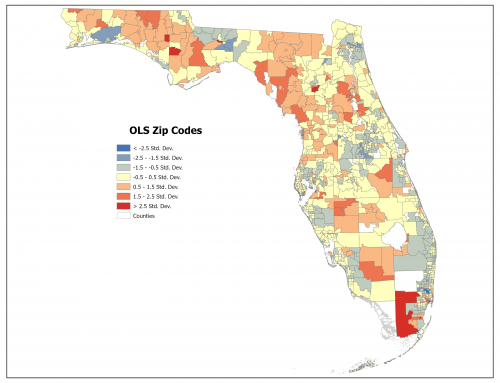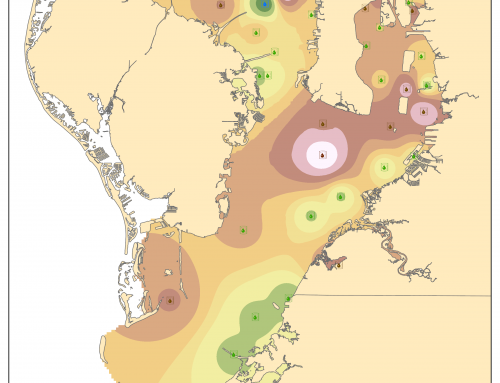A short two days following the completion of the Final Project for GIS4043, I am delving into Photo Interpretation and Remote Sensing (GIS4035). The first lab provides an overview on elements of visual image interpretation, with historical black and white air photos of Pensacola Airport and Pensacola Beach in Northwest Florida.
The first aspect of aerial photography interpretation references the tone, or the shades of gray from light/white to dark/black. Referencing the course textbook Remote Sensing of the Environment – An Earth Resource Perspective, tone is a function of the amount of light reflected. Consequently, the greater the absorption of the incident red light by forest stands results in a darker tone.
Large grassy areas, such as those within the Pensacola Airport grounds or for the runway safety areas, appear on the aerial below with a lighter tones. The soil in Escambia County is very sandy, and sand appears in a light tone. Areas by the airport where grading appeared to be underway at the time appear with a very light tone.
Texture is defined in the course textbook as the characteristic placement and arrangement of repetitions of tone or color in an image. With aerial photography, texture aids in identifying land areas populated by similar groups of objects. The definitions of texture range from fine/smooth, where an area is uniform or homogeneous, to intermediate/mottled, and rough/coarse where the contents of an area are heterogeneous.
Some of the examples identified in the Pensacola aerial included fine areas of smooth surface water in Escambia Bay and swatches of flat grassland. Texture increases with variation on the ground cover, such as areas within Pensacola Airport, to coarse areas of timber land located toward the bay front. The roughest areas of texture include subdivisions with the mixture of house footprints and tree canopies.
Next to consider when it comes to identifying features on an air photo are aspects of shape, size, pattern, shadows and association. Shape can be a dead give away in some instances, such as the Pensacola Beach fishing pier (one long since replaced due to hurricanes), with its linear appearance on the following aerial.
Shadows often provide insight into what an object may be, such as the Pensacola Beach Water Tower. Looking closer, smaller objects are indefinable based upon their shadow, such as palm trees because of the distinct shape of their fronds.
Like many things in life, appearances on the ground often result in a pattern, or a series of patterns. Striping for a parking lot creates a pattern of linear or angled spaces. A subdivision usually has some uniformity in the placement of houses and their orientation to each street.
Depending upon the area and prior knowledge, a more difficult element of visual interpretation is association. Association is highly variable and references the related surrounding of an object or activity.
Located north of the water tower, the association of the two linear buildings, adjacent parking areas and a swimming pool in between conveys that collectively the site is a motel. A likely restaurant is identified at the north end of the aerial photo based upon the association with the large parking lot and assorted vegetation immediately surrounding the building.
The True Color imagery of the University of West Florida campus and points north along the Escambia River shows the landscape under natural light, or what is visible with the naked eye. False Color is sensitive to near infrared and shows areas where more infrared energy is reflected with shades of red. By separating green, red and NIR bands, and applying a unique color for each, this allows one to more readily distinguish types of vegetation.








